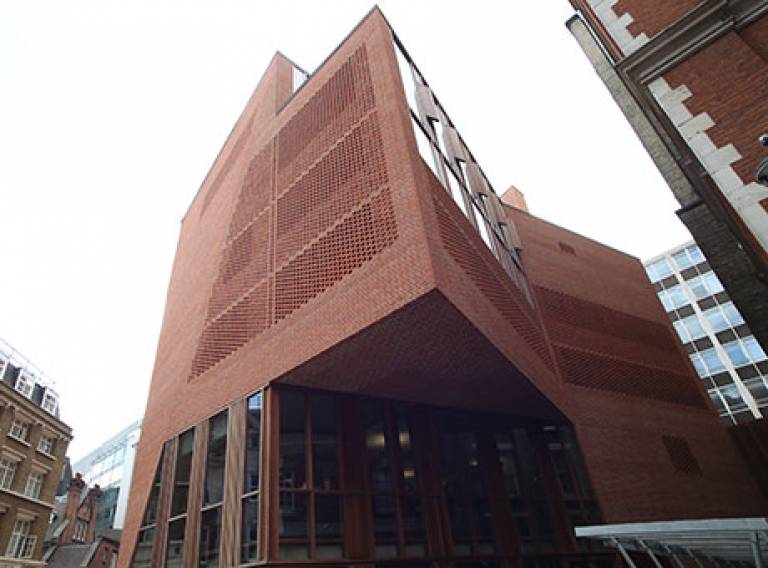Flashy university buildings: do they live up to the hype?
21 September 2015

Alexi Marmot, Professor of Facility and Environment Management at UCL IEDE, writes in The Guardian Higher Education Network exploring whether edgy, statement university buildings are worthwhile, or whether simply designed, quickly built options could be just as good.
Universities, suggested the late Sir David Watson (professor of higher education at Oxford, vice-chancellor at Brighton) can be viewed as property companies with education tacked on. Estate issues consume vast amounts of time and money – and prompt emotional debate – within universities.
Everyone’s aim is to create noble buildings and campuses that will attract talented staff and students, boosting the university’s standing in the competitive international league. But some new buildings end up attracting criticism and controversy – they’re judged weird and kinky, and they fail to fulfill their function as icons.
Do such ambitious buildings really work for the staff and students for whom they are designed? What aspects of the new buildings stimulate better teaching, learning and research? Might more restrained and elegantly designed buildings meet university requirements just as well? Can unpretentious, cheap buildings erected rapidly by design and build contractors, satisfy users?
We need much more solid evidence to answer these questions with conviction. Research on “post-occupancy evaluation” – how buildings are perceived by those who use them – is still rather unusual, although it is always recommended.
University estate directors have collaborated on a methodology for conducting post-occupancy evaluation through the Higher Education Design Quality Forum (HEDQF) – but few apply it.
Though they know lessons learned could bring quick-fix improvements to the new building – and help future projects – HE leaders are usually reluctant to run the risk of unearthing any tricky issues after the budget has been spent.
So what do we know? From the available research, some interesting findings emerge.
National Student Survey results for 2015 show that 86% of undergraduates are satisfied with their learning resources (library, IT and access to specialised equipment, facilities and rooms.) Good news, but it does not illuminate whether particular buildings or features are positive.
Meanwhile Carbon Buzz data demonstrates that actual energy use and carbon emissions in new university buildings are double that predicted at the design stage.
When asked their views, students commonly complain about poor internal air quality and temperature, and express the need for more spaces for group work with their peers, more computers and computer rooms. They want “make spaces” for creative experimentation, and more social learning spaces, and they want these spaces to be open 24/7.
All university buildings – the new and the old – need to respond to evolving requirements. Flexibility and adaptability through time is one of the most precious attributes of all HE buildings.
After all, European universities and their architecture have already endured for more than a millennium, and more than 800 years in the UK. All have grown dramatically in the last century and continue to grow, even as online learning accelerates. Their future success and survival will be aided by better and more adaptable buildings, based on a well-researched evidence base.
> Read the full article in The Guardian Higher Education Network
 Close
Close

